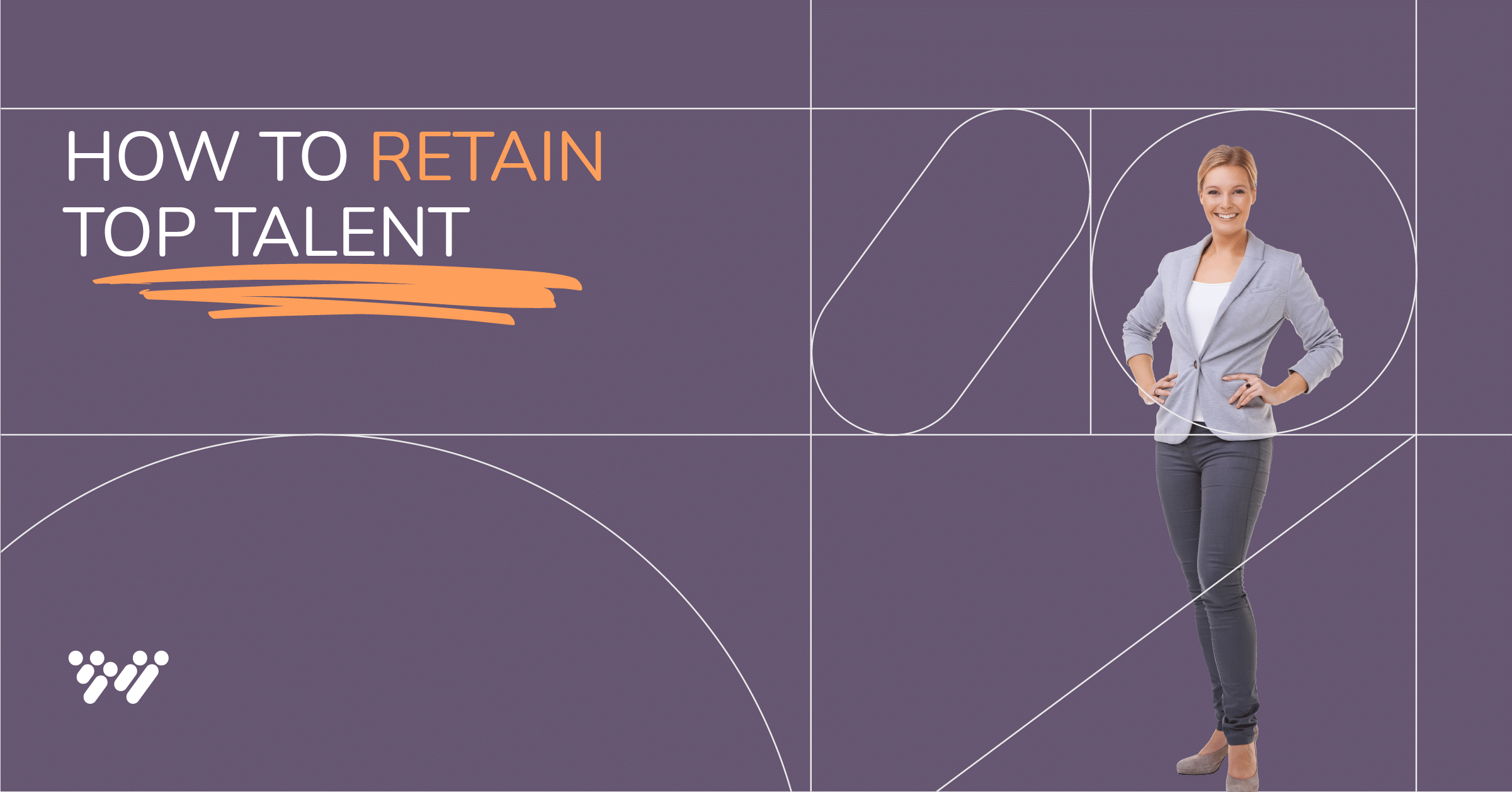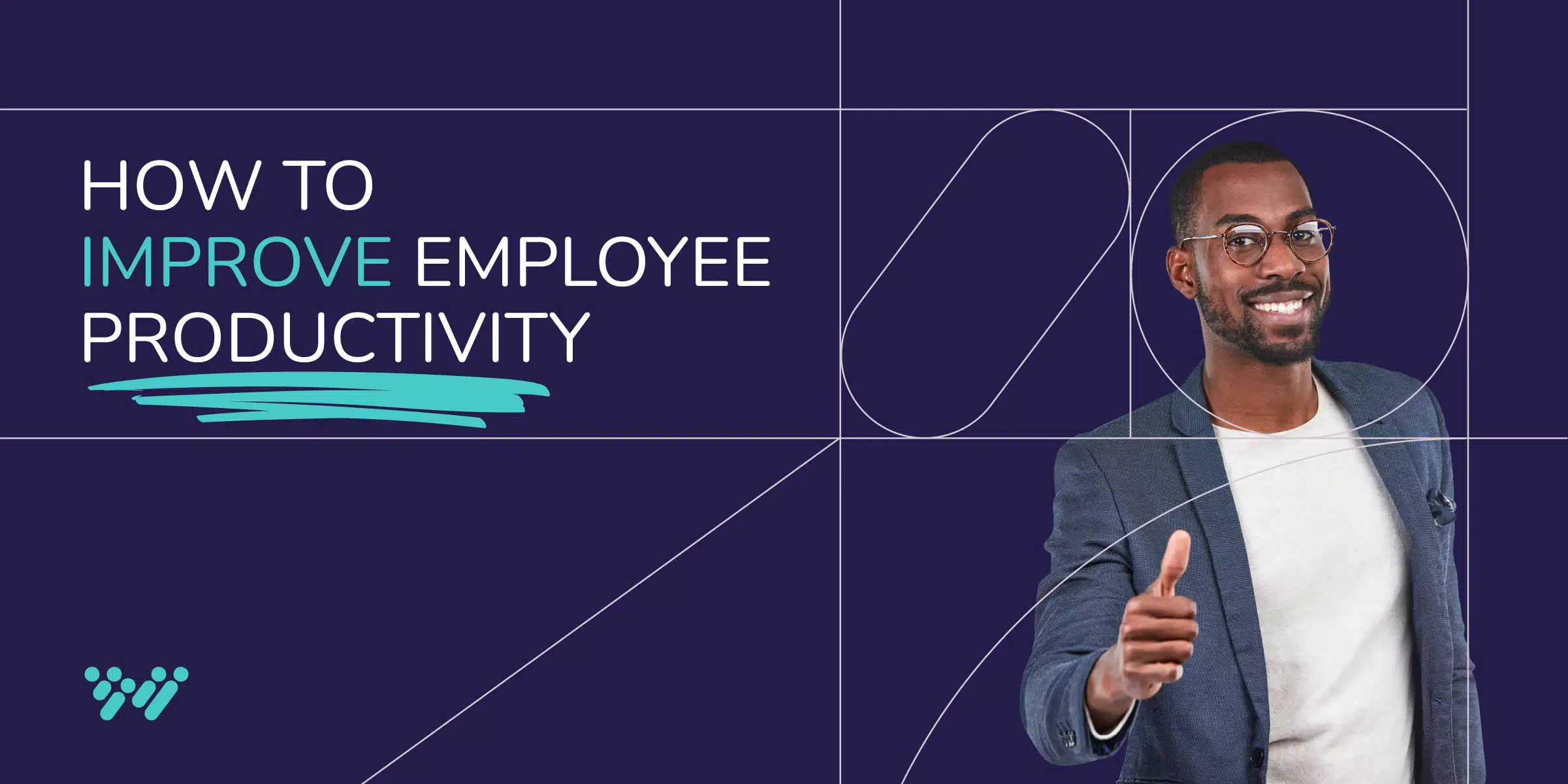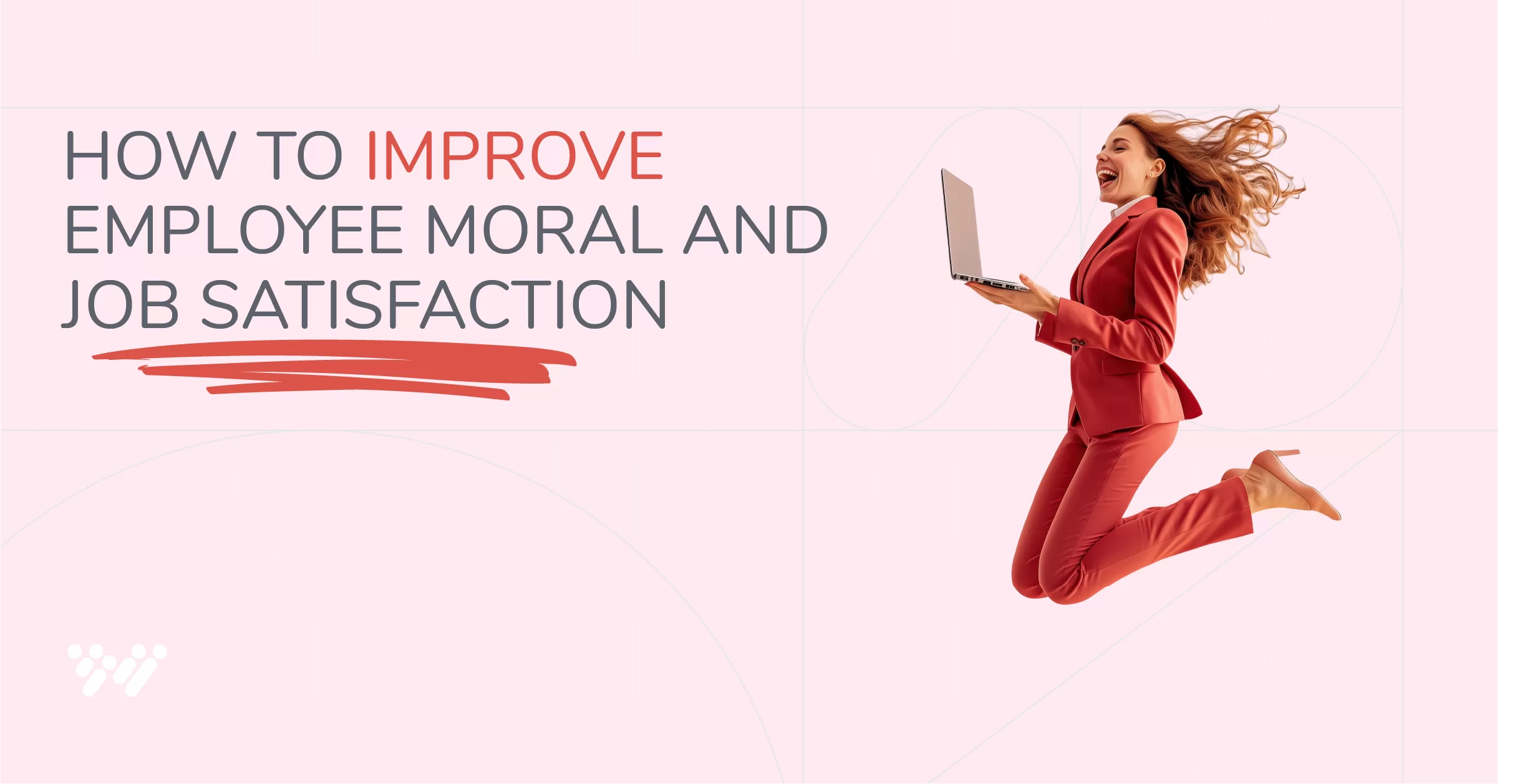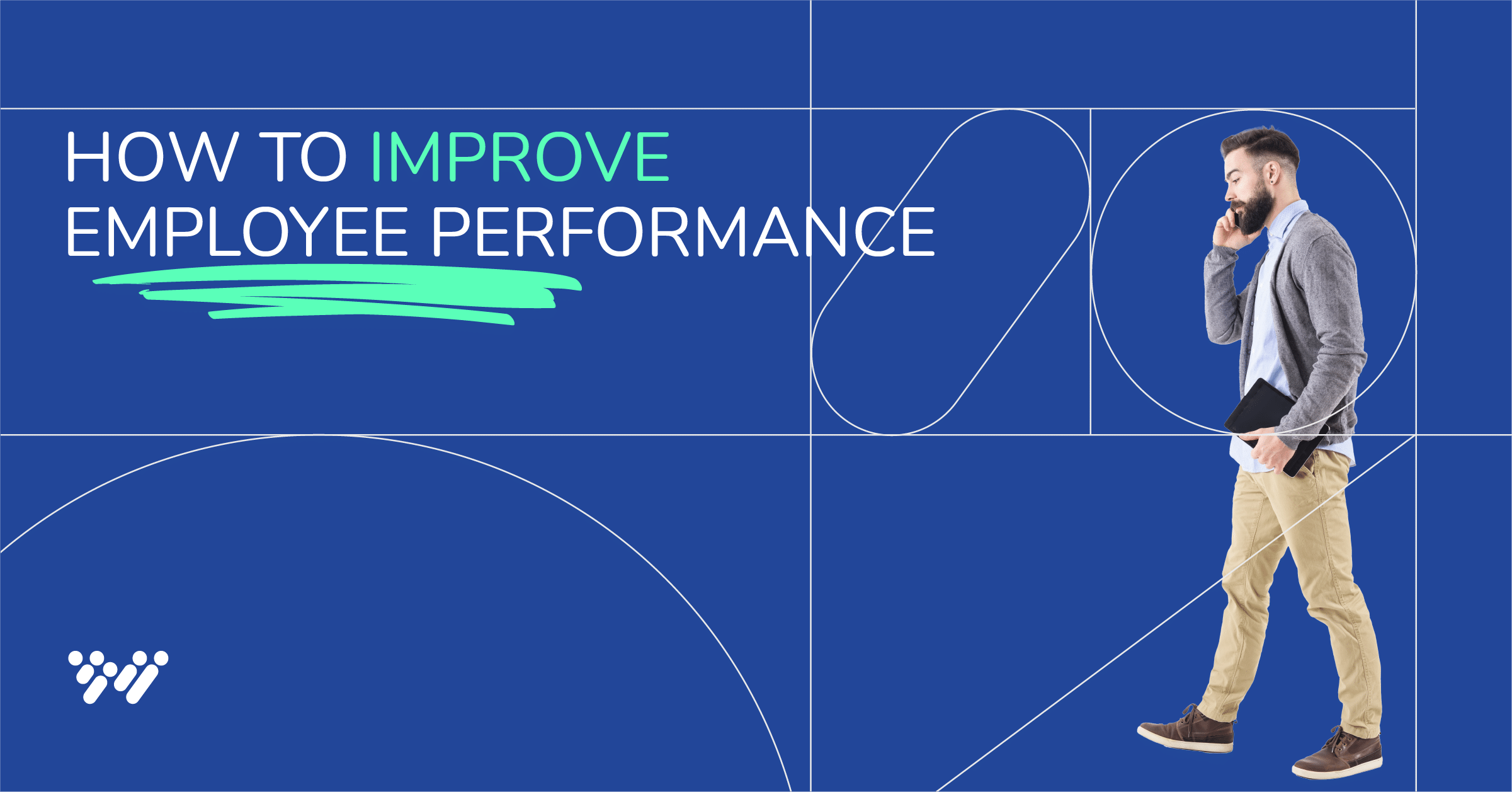With all the hype about automation and AI taking jobs, you might wonder if there’s a surplus of talent in the market. It’s actually the opposite. The truth is, there’s a very real and ongoing talent shortage — leaving HR teams to wonder how they can retain their top talent.
A global CEO survey from PwC found that one out of two CEOs believe labor and skills shortages will significantly impact profitability in their industry over the next 10 years. According to a report from the World Economic Forum, employers see skill gaps and the ability to attract top talent as the main obstacles to industry transformation.
As skills become more valuable and talented workers grow scarcer, finding top talent — and holding on to them — is the number one ingredient to success.
So, what employee retention strategies can you adopt now to keep your best people for the long term? In this blog post, we explore tried and true methods to retain top talent to keep your best people for years to come.
Table of contents
- What is employee retention?
- Why talent retention is critical for business success
- 5 strategies for retaining top talent for your business
- How Wonderlic Select helps you hire the right employees from the start
- How Wonderlic Develop helps you build top talent
- Get a Free Demo of Wonderlic Select and Develop
- FAQs
What is employee retention?
Employee retention evaluates how well a company can keep its staff and minimize turnover. By giving workers flexibility in where and when they work, making them feel valued and safe, offering meaningful work, and encouraging healthy work-life harmony, employers can cut costs, boost productivity, and amplify their profits.
Why talent retention is critical for business success
Did you know that 42% of workers plan to look for a new job within six months? To put that in perspective, if your organization has 200 employees, that’s almost 85 people looking for new jobs!
But beyond the daunting reality of people leaving, what’s really at stake with employee turnover?
High costs and lost productivity
The costs of high employee turnover can be huge. Josh Bersin predicts that the cost of replacing an employee ranges between one and two times their annual salary. Not only that, the expenses associated with training new hires for small businesses are around $1,420 per employee.
More stress on employees (and customers)
Missed deadlines and lost important institutional knowledge put a lot of stress on employees and customers. It can cause inefficiencies and affect customer service. Customers may have to wait longer than necessary for a response, and customer relationships may need to be reforged.
There’s also the lost productivity when a job role stays open for weeks or months, with other employees left to pick up the slack or forced to leave work unfinished. This can lead to staff being overworked and stressed. And when employees feel overstretched, it’s harder for them to stay productive.
That said, it’s normal for new employees to go through a period of learning and adjustment in their new role, but losing, say, four in ten new hires within six months is a problem. High turnover can suggest problems with the hiring procedure, work environment, or even management. Improving employee retention can reduce stress as employees and customers face less disruption — and you get to keep valuable skills and knowledge within the company.
Poor brand reputation
If employees are leaving due to bad experiences at your company, chances are they’ll talk about it, whether that’s with peers or in public spaces like Glassdoor reviews. This negative press could harm your ability to attract new employees, leading to a downward spiral of employee turnover and an inability to find quality new hires.
Remember: Brand reputation starts even before your hiring decision. Inefficient hiring practices — like lengthy interviews, vague job descriptions, and ghosting candidates — can frustrate top talent and harm your recruitment efforts. Applicants may lose interest or accept offers from companies with faster and clearer hiring experiences.
“With nearly half of employees on the move, candidates feel empowered to change jobs, but the data shows many companies haven’t gotten their hiring priorities in order. Drawn-out interviews, misleading job descriptions, and ghosting only make for a frustrating candidate experience. Big companies are making basic and costly mistakes.”
— Daniel Chait, CEO at Greenhouse
That said, turnover isn’t all bad, and some of it is inevitable. Turnover can also bring different perspectives, talent, and fresh ideas. The key is to keep it to a minimum. If you don’t address why people are leaving, you risk your organization’s long-term success. With that in mind, here are several strategies to help retain your key employees.
5 strategies for retaining top talent for your business
With over half of companies struggling to retain their most valuable employees, keeping your best people doesn’t have to be a headache. But it does require a deep understanding of your organization’s culture and employees’ needs combined with a sincere commitment to your employees. Here are several retention strategies that are not just quick fixes but long-term investments in your organization and people.
1. Attract the right people from the start
Bad hires can seriously hurt your business. Toxic workers — those who consistently behave in a way that is harmful to others or the work environment — create a negative atmosphere that can ripple through an entire team, affecting quality and productivity. In the same vein, employees who underperform increase the workload for their colleagues and line managers. In some businesses, not performing due diligence can even expose the company to legal risks and fines if compliance isn’t met.
To overcome these issues, start by making smarter, data-driven hiring decisions. With pre-hire assessments like Wonderlic Select and a standardized interview process, you can immediately qualify applicants based on personality, motivation, and cognitive ability — three factors that, combined, are highly predictive of cultural fit and performance.
Here are a few tips to help you hire smarter:
- Craft clear job descriptions, showcasing the role’s responsibilities and your company culture to attract candidates who align with your values
- Make sure you have a standardized recruitment process where you use the same screening tools and interview questions every time. This will help you get consistent results from your screening efforts while reducing bias.
2. Provide opportunities for growth and development
Considering that 90% of organizations are concerned about employee retention, it’s hardly surprising that providing learning opportunities is one of the best retention strategies. Learning new skills and taking on new challenges can increase job satisfaction. Employees who feel they are growing and evolving are less likely to seek new opportunities elsewhere.
Consider offering a range of professional development opportunities tailored to your people. These might include:
- Coaching and mentoring sessions to help employees develop their skills and navigate their career paths with personalized guidance and support.
- Leadership development programs for employees who show potential for management or executive roles.
- Personalized employee development paths that are customizable based on an employee’s goals and interests
Make sure to keep generational preferences in mind as well for your development programs. For example, when it comes to employee development, Gen Z is hungry for growth and career opportunities.
3. Stay aware of workforce demographics
Currently, 72% of Gen Z and 66% of millennials are considering quitting their jobs. In contrast, about 55% of Gen X and 30% of Baby Boomers also consider making a move. With workforce demographics wanting different things out of their jobs, organizations have their work cut out when retaining staff. In addition to generations’ differing expectations, there’s also the possibility of workplace conflict. If managers or other employees have negative stereotypes about different generations or cultures, it can make these employees feel uncomfortable or unappreciated, reduce their job satisfaction, and lead to turnover. By adopting a few simple processes to meet employees’ unique needs and preferences while facilitating cross-generational teamwork, you can retain top talent in your company and keep everyone engaged by:
- Requesting employee feedback and addressing concerns. Give everyone a voice to improve current processes, regardless of age.
- Setting up internal employee resource groups (ERG) to help everyone learn to respect and value other generations. Encourage people to talk about what is important to them at work and outside of work and why.
- Planning multicultural events, such as Diwali or Chinese New Year, can help employees feel included and increase their awareness of different cultures.
- Being thoughtful about communication channels. Online communication platforms like Slack may be great for younger, office-based roles, but older workers may prefer email or one-on-one meetings. Provide various channels for communication and ensure all employees feel heard and valued.
4. Create a welcoming environment for new hires
Good onboarding procedures set the tone for the rest of the employee experience. It helps new employees understand their roles, grasp the company’s culture and internal procedures, and build strong relationships with peers while getting excited about the company’s product, services, and purpose.
Here are a few simple steps you can follow to ensure new hires feel at home and ready to hit the ground running:
- Develop a robust onboarding process that helps new hires integrate smoothly and understand their roles and responsibilities.
- Include meet-and-greet sessions with colleagues and key stakeholders to help new hires build relationships and feel part of the team.
- Schedule regular check-ins to answer any questions or address concerns quickly.
- Employ a pre-hire assessment like Wonderlic Select to identify employees’ unique learning styles and personality types to amplify the onboarding process.
- Use a self-led employee development tool like Wonderlic Develop to deliver personalized training plans at scale to address each new hire’s development needs, highlighting strengths and areas that need additional support.
5. Motivate with rewards and recognition
A simple “thank you” can go a long way. Over three-quarters of employees would work harder if they felt more appreciated. Research also shows that companies with formal employee recognition programs see 31% less voluntary turnover than those without.
When it comes to retaining key talent at your organization, offering rewards for good performance motivates employees to stay engaged and perform at their best while discouraging job-hopping.
And although financial rewards are great for some employees, they’re not the end-all, be-all for everyone. Offering other meaningful rewards, such as public recognition and acknowledging employees in front of their peers, during team meetings, or on social media, can be highly empowering.
Motivate your employees to maintain productivity and retention by:
- Making celebrating wins the norm, not the exception. Leverage your organization’s communication platforms to acknowledge employees’ efforts and achievements.
- Providing tailored benefits catering to each employee’s interests and needs. For instance, offer a subscription to a service related to their hobbies or allow time for a side gig.
- Offering spot bonuses, SPIFFs (sales performance incentive funds), or other financial incentives to motivate employees.
How Wonderlic Select helps you hire the right employees from the start
Here’s a situation that may sound familiar. You posted a job a couple of weeks ago, and now you’re faced with a mountain of applications. Sorting through each to see who has what it takes for the next stage of the hiring process and responding to those who didn’t meet the criteria feels overwhelming, time-consuming, and maybe even impossible.
Wonderlic Select can streamline the hiring process by providing timely updates and cutting down on administrative work. And, as pioneers in short-form cognitive ability tests, Wonderlic uses over 80 years of experience to help you predict on-the-job performance. By combining cognitive ability, personality, and motivation tests into one assessment, Wonderlic Select provides granular insights into the specific role you’re hiring for. You can immediately narrow down the candidate pool to the top 10%, removing the need to review dozens or even hundreds of resumes.
With Select, you can uncover valuable insights into skills like problem-solving and numerical reasoning. And after hiring, Select’s insights can support effective onboarding with personalized tips and strategies.
“Wonderlic Select has offered our company a far more streamlined tool for assessing candidates than prior providers we have worked with. The data provided is insightful in learning the candidate’s cognitive ability, motivation, and personality. It is concise and easy for our less-experienced hiring managers to understand and navigate.”
— Linda, Director of Human Resources, Mays Chemical
If you’re not yet using cognitive ability testing regularly to identify and develop top performers, now is the time to start.
How Wonderlic Develop helps you build top talent
Investing in employees via online courses, workshops, and seminars is valuable, but an even better approach is to provide personalized development from the start. This strategy helps ensure a three-pronged approach by recruiting top talent, developing top talent, and retaining top talent. Instead of giving all new hires the same training, Wonderlic Develop can help you provide tailored development plans for each person’s strengths, needs, and career goals.
Wonderlic Develop is a self-led, scalable employee development solution that gives every employee a personalized learning experience based on their highest-effort and least-effort attributes (what comes easiest to them and what requires more focus), things like diligence, teamwork, and adaptability. This eliminates the burden of managers creating development plans for each employee while giving employees autonomy and ownership over their growth and careers.
According to Gartner, 76% of HR leaders report their managers feeling overwhelmed by increasing job duties; finding ways to address this “malaise in the middle” by empowering staff to take ownership of their development can reduce workload and stress.
Unlike a one-size-fits-all approach, personalized learning via Develop engages employees by providing relevant, customized content. This accelerates skill development while also boosting motivation, job satisfaction, and, in turn, retention.
Get a Free Demo of Wonderlic Select and Develop
Looking to retain top talent in your organization, grow your team, and enhance productivity? Get started with a demo of Wonderlic.
FAQs
To keep the best employees, create a positive work environment, offer chances for growth, provide fair pay and recognition, and provide flexibility with where and when employees work.
Use standardized recruitment and screening tools to attract the right talent from the start and make a solid first impression (candidates feel more valued when they know they’re being evaluated fairly and holistically)
Offer comprehensive onboarding and orientation processes to help new hires feel welcomed, informed, and well-prepared for their roles
Provide ongoing development opportunities tailored to each role and each employee’s learning style to help employees grow and see a positive future for themselves with your company
Motivate candidates, encourage them to grow, and empower them to do their best work through personalized development solutions like Wonderlic Develop. Develop provides ongoing, personalized feedback and growth plans to help employees improve their performance and grow in their careers.
You should also strive to maintain a supportive work culture through open and transparent communication and regularly acknowledging and celebrating employees’ wins.








